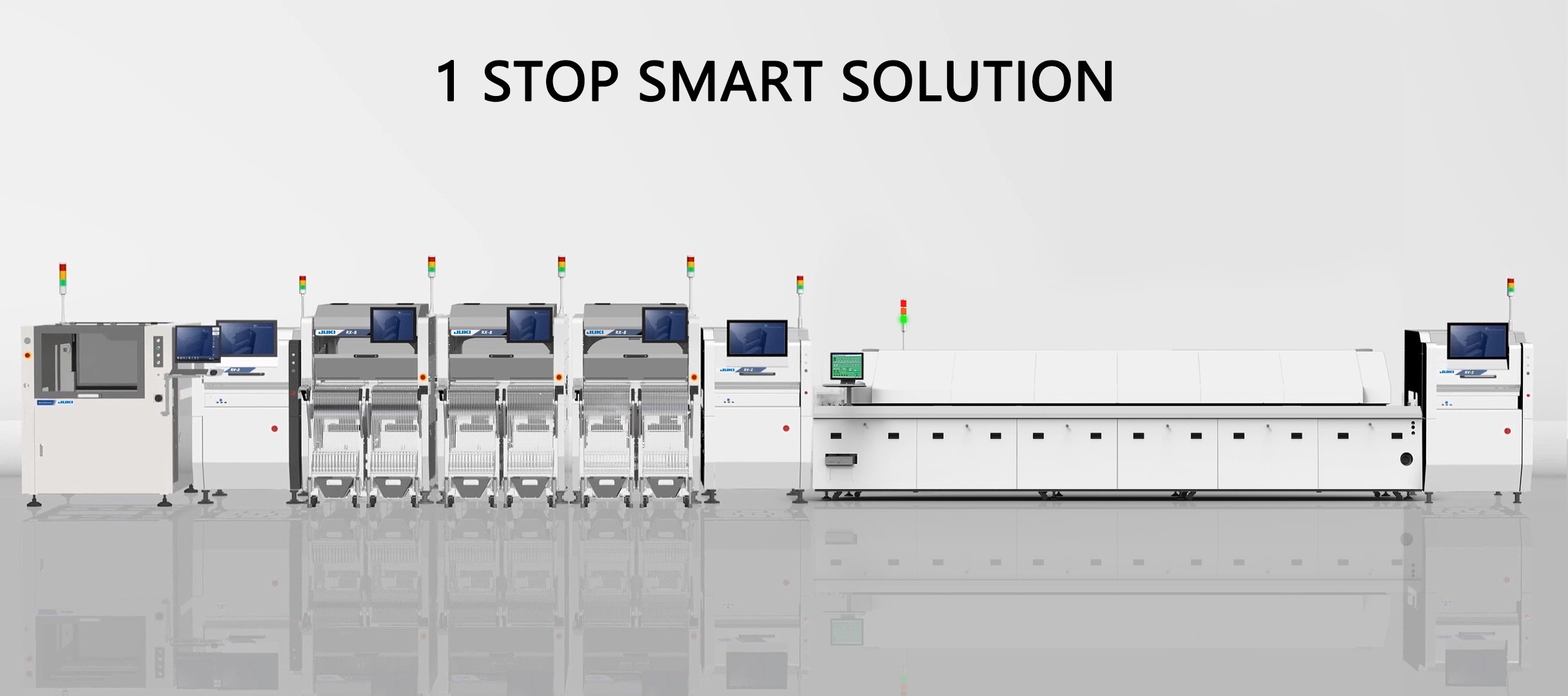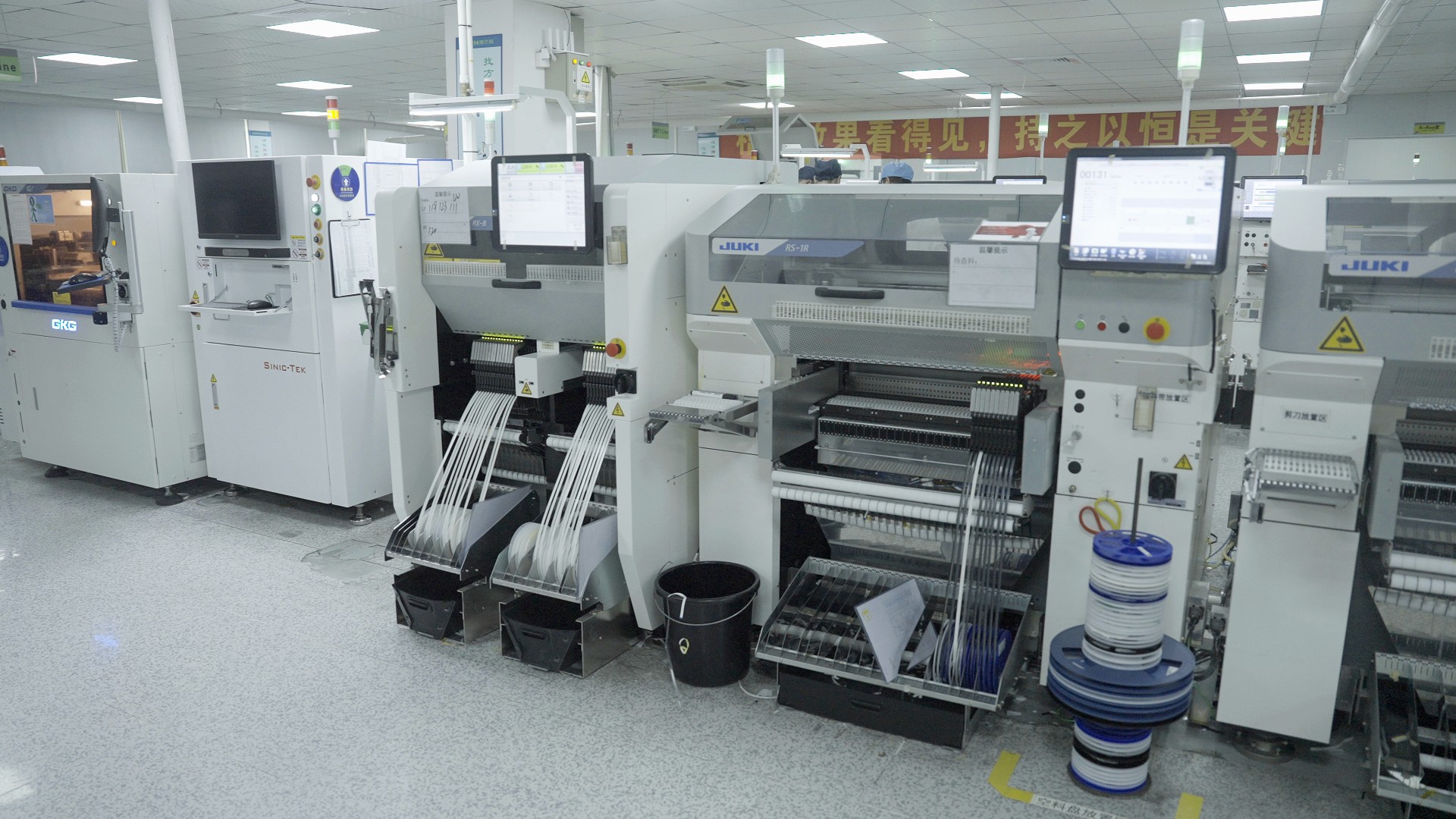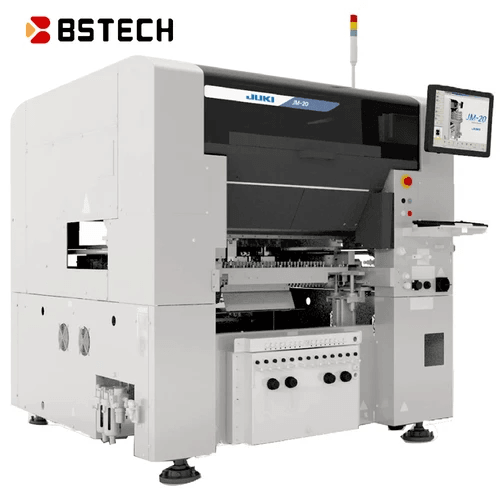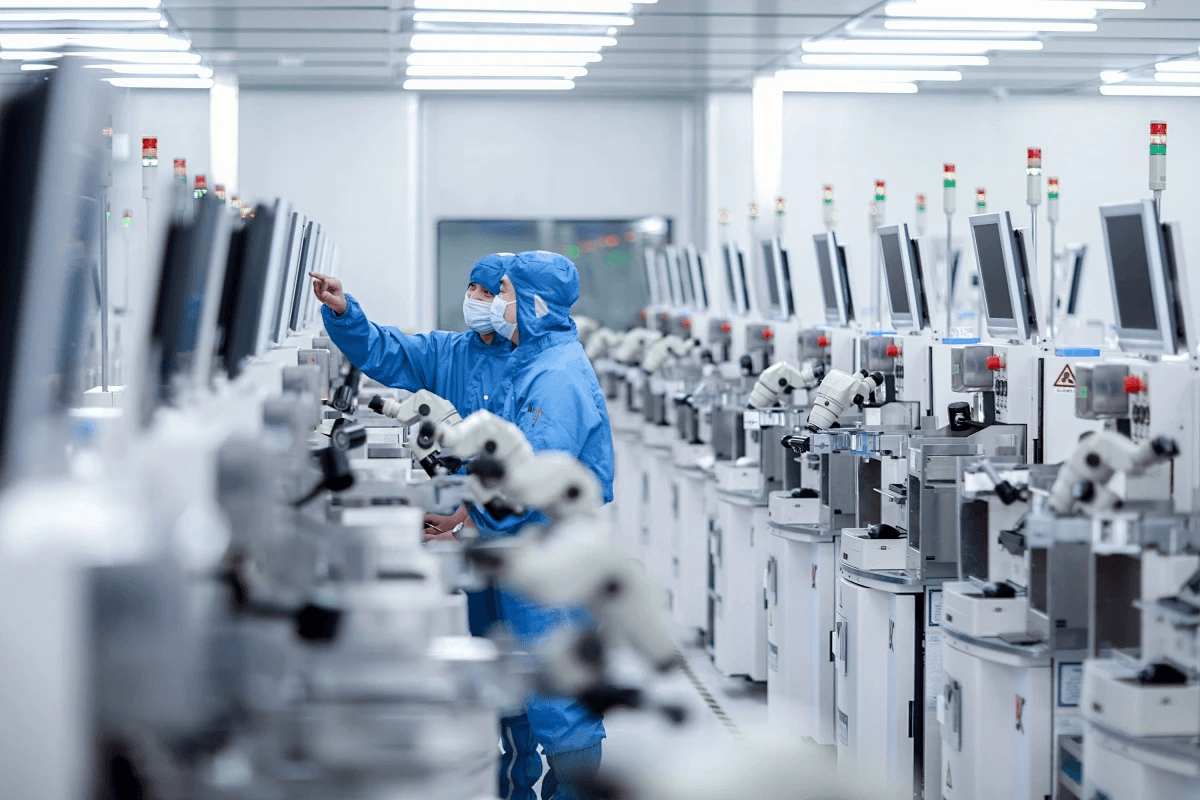Introduction

In the world of electronics, SMT pick and place machines play a pivotal role in the efficiency and accuracy of printed circuit assembly. These machines are designed to automate the process of placing surface-mount components onto circuit boards, significantly enhancing PCB manufacturing and assembly operations. With the increasing demand for precision in circuit board production, understanding these machines becomes essential for anyone involved in PCB fabrication and assembly.
Discovering SMT Pick and Place Machines
SMT pick and place machines are sophisticated devices that revolutionize how components are mounted on printed circuit boards. They utilize advanced technologies to ensure that each component is placed with utmost precision, which is critical for high-quality circuit card assembly. As manufacturers seek to improve their production lines, discovering the right SMT pick and place machine can be a game-changer for optimizing PCB assembly manufacturing processes.
Key Features to Consider
When selecting an SMT pick and place machine, several key features should be taken into account to ensure it meets specific production needs. Speed and precision are paramount; faster machines can significantly enhance throughput while maintaining accuracy in component placement during PCB fabrication and assembly. Additionally, software compatibility is crucial for seamless integration into existing systems, while load capacity determines flexibility in handling various types of components—factors that directly influence overall efficiency.
Understanding Pricing Dynamics
The price of SMT pick and place machines can vary widely based on numerous factors including economic variability, brand reputation, and whether you choose new or used equipment. Understanding these pricing dynamics is essential for making informed purchasing decisions that align with your budget while still meeting your production requirements. By exploring different brands and their offerings, one can find a balance between cost-effectiveness and quality in PCB assembly manufacturing solutions.
What is a SMT Pick and Place Machine?

In the world of PCB manufacturing and assembly, the SMT pick and place machine stands as a pivotal player. This sophisticated equipment is designed to automate the process of placing surface mount components onto printed circuit boards (PCBs) with remarkable speed and accuracy. Understanding its definition, functionality, importance, and various types will provide valuable insights into its role in circuit card assembly.
Definition and Functionality
A SMT pick and place machine is essentially a robotic device that precisely positions electronic components onto PCBs during the manufacturing process. It uses advanced vision systems to identify component locations and ensure exact placement on the circuit board. This functionality significantly enhances efficiency compared to manual assembly methods, reducing production time while maintaining high-quality standards.
Importance in PCB Manufacturing
The importance of SMT pick and place machines in PCB manufacturing cannot be overstated; they are central to modern electronic production lines. By automating component placement, these machines help streamline the entire PCB fabrication and assembly process, minimizing human error and increasing throughput. As a result, businesses can meet growing demands for faster production cycles while ensuring consistency in quality across their circuit board assemblies.
Types of SMT Pick and Place Machines
There are several types of SMT pick and place machines available on the market, catering to various production needs within PCB assembly manufacturing. These can range from high-speed models designed for large-scale operations to more compact versions suitable for smaller batch runs or prototyping tasks. Understanding these different types helps manufacturers choose the right equipment based on their specific requirements—balancing factors like speed, precision, load capacity, and of course, smt pick and place machine price.
Key Features of SMT Pick and Place Machines

When diving into the world of SMT pick and place machines, understanding their key features is crucial for optimizing your PCB manufacturing and assembly processes. These machines are not just about placing components; they come packed with functionalities that can significantly enhance productivity and efficiency. Let’s explore some of the standout features that define these machines.
Speed and Precision
Speed and precision are the cornerstones of any successful circuit board assembly operation. An efficient SMT pick and place machine can achieve high placement speeds, often exceeding 20,000 components per hour, which is essential for keeping up with the demands of modern PCB manufacturing. Additionally, precision placement ensures that components are accurately positioned, reducing defects during the printed circuit assembly process—because nobody wants to deal with costly rework!
Moreover, the combination of speed and precision directly impacts your overall production costs. Investing in a high-quality machine may seem daunting when considering the smt pick and place machine price, but remember: faster production times coupled with fewer errors lead to significant savings in both time and resources.
Software Compatibility
Software compatibility is another crucial feature that can make or break your experience with SMT pick and place machines. Many modern machines come equipped with advanced software solutions designed to streamline programming for various circuit card assembly tasks. This means less time spent on setup and more time dedicated to actual PCB fabrication and assembly.
Furthermore, a user-friendly interface allows operators to easily adapt to different projects without extensive training or downtime. When evaluating smt pick and place machine prices, consider how well the software integrates with your existing systems—this could save you headaches down the line as you scale up production.
Load Capacity and Flexibility
Load capacity refers to how many components an SMT pick and place machine can handle at once—a vital feature for any manufacturer aiming for efficiency in their PCB assembly manufacturing process. Machines designed with higher load capacities allow for longer runs without frequent interruptions for reloading materials, which translates into better workflow management.
Flexibility also plays a significant role here; many machines can accommodate various component sizes—from tiny resistors to larger connectors—making them versatile assets in your production line. As you assess smt pick and place machine prices, keep an eye on these features; investing in a flexible model can adapt as your needs evolve in this fast-paced industry.
SMT Pick and Place Machine Price Factors

When considering the acquisition of an SMT pick and place machine, understanding the price factors is essential for making an informed decision. Prices can fluctuate based on various elements, including economic conditions, whether you opt for a new or used model, and the brand's influence on market value. Each of these factors plays a pivotal role in shaping the overall cost of machines used in printed circuit assembly.
Economic Variability
The price of an SMT pick and place machine can be significantly affected by economic variability. Fluctuations in global supply chains, material costs, and labor rates all contribute to changes in pricing dynamics within the PCB manufacturing landscape. When demand surges or economic downturns occur, manufacturers may adjust their prices accordingly to maintain profitability while catering to circuit board production needs.
New vs. Used Pricing
Choosing between a new or used SMT pick and place machine can greatly impact your budget for PCB fabrication and assembly projects. New machines often come equipped with advanced technology, warranties, and support but carry a higher price tag that reflects their cutting-edge features. On the other hand, used machines can provide significant savings; however, they may lack certain functionalities or require additional maintenance that could affect overall performance during circuit card assembly.
Brands Impacting Prices
Brand reputation plays a crucial role in determining SMT pick and place machine prices within the competitive market. Well-established brands like Panasonic or Yamaha often command higher prices due to their reliability and proven track record in PCB assembly manufacturing excellence. Conversely, lesser-known brands might offer more budget-friendly options but may not deliver the same level of performance or longevity expected from industry leaders.
Integrating SMT Machines in Production

Integrating SMT pick and place machines into your production line can revolutionize the way you approach circuit board manufacturing. These machines not only enhance the efficiency of printed circuit assembly but also ensure precision that is hard to achieve manually. With the right setup, businesses can significantly reduce errors, leading to better quality control in PCB fabrication and assembly.
Circuit Card Assembly Benefits
The benefits of using SMT pick and place machines for circuit card assembly are substantial. These machines enable high-speed placement of components, which drastically reduces assembly time compared to traditional methods. With improved accuracy, manufacturers can minimize defects, ultimately enhancing product reliability and customer satisfaction.
Moreover, the ability to handle a variety of component sizes and types makes these machines incredibly versatile for different PCB manufacturing projects. This adaptability allows companies to respond quickly to market demands without incurring excessive costs or delays associated with manual labor. In essence, investing in an SMT pick and place machine is a strategic move that pays off through increased productivity and reduced operational costs.
Enhancing PCB Fabrication and Assembly
SMT pick and place machines play a crucial role in enhancing PCB fabrication and assembly processes by automating complex tasks that would otherwise require significant human intervention. By employing advanced technology, these machines ensure precise placement of components on the circuit board, which is vital for maintaining signal integrity in electronic devices. This level of accuracy is especially important as circuits become more compact with smaller components.
Additionally, integrating these machines into your production workflow allows for seamless scalability as demand fluctuates over time. Companies can easily adjust their output without compromising quality or speed when they have reliable machinery at their disposal. Ultimately, this leads to better resource management and higher profitability within the realm of PCB assembly manufacturing.
Streamlining Production Workflow
Streamlining production workflows becomes increasingly achievable with the integration of SMT pick and place machines into your operations. These advanced systems reduce bottlenecks often seen in manual processes by speeding up component placement while maintaining high standards of quality control during printed circuit assembly tasks. As a result, overall cycle times are shortened significantly.
Furthermore, having an efficient workflow translates into cost savings across various aspects of PCB manufacturing and assembly—from labor costs to material waste reduction—making it easier for businesses to stay competitive in a rapidly evolving market landscape. The combination of speed, precision, and flexibility provided by these machines fosters an environment where innovation can thrive without being hindered by outdated practices or inefficiencies.
In conclusion, adopting SMT pick and place technology not only enhances productivity but also helps organizations adapt more readily to changing industry demands while ensuring top-notch quality across all stages of circuit board production.
Conclusion
In the rapidly evolving world of PCB manufacturing and assembly, selecting the right SMT pick and place machine is crucial for optimizing production efficiency. With various options available in terms of speed, precision, and price, it's essential to consider your specific needs when making a decision. By understanding the factors influencing SMT pick and place machine price, you can make an informed investment that will enhance your circuit card assembly processes.
How to Choose the Right Machine
Choosing the right SMT pick and place machine involves evaluating several key features that align with your production goals. First, assess the speed and precision required for your printed circuit assembly tasks; faster machines can significantly boost productivity but may come at a higher cost. Additionally, consider software compatibility to ensure seamless integration into your existing PCB fabrication and assembly workflow.
Another important factor is load capacity; a flexible machine that can handle various components will serve you well in diverse projects. Don't forget to factor in service support from manufacturers as this can greatly influence long-term satisfaction with your purchase. Ultimately, making an educated choice based on these elements will lead to improved efficiency in PCB assembly manufacturing.
Benefits of Buying Online
Purchasing an SMT pick and place machine online offers several advantages over traditional retail methods. Firstly, online platforms provide access to a broader range of options at competitive prices; you can easily compare SMT pick and place machine prices across different brands without leaving your office. This can be especially beneficial for businesses looking to optimize their budget while investing in quality equipment for circuit board production.
Additionally, buying online often grants access to customer reviews and ratings that help guide your decision-making process. You can also take advantage of promotional offers or discounts that might not be available through local distributors—saving both time and money in the process! With just a few clicks, you can secure the best deal on machinery critical for efficient PCB fabrication and assembly.
The Future of PCB Assembly Manufacturing
The future of PCB assembly manufacturing looks promising as technology continues to advance rapidly within this sector. Innovations in SMT pick and place machines are expected to enhance speed and accuracy even further while reducing operational costs—making it easier for companies to compete globally. As automation becomes more prominent in circuit card assembly processes, manufacturers who invest wisely will reap significant benefits from increased productivity.
Moreover, ongoing developments in artificial intelligence are set to revolutionize how we approach printed circuit assembly by enabling smarter machines capable of self-diagnosis and predictive maintenance features. This shift could drastically reduce downtime associated with equipment failures—a critical factor for any successful PCB fabrication and assembly operation looking toward future growth opportunities! By embracing these changes now, businesses position themselves favorably within an increasingly competitive landscape.
